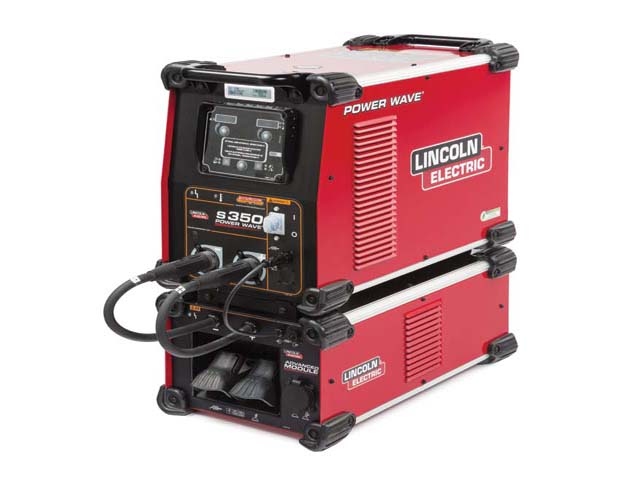Your outfit is about halfway finished with a new pilot boat, but now things are complicated and a bit tense because you just signed a contract to build a ferry on a very tight schedule.
Big problem. You don’t have enough skilled welders. Two guys recently retired, one guy quit and you had to fire another. Meanwhile, there’s no line of skilled welders waiting outside the gates.
“It’s a common compliant not being able to find the skilled people to do the work,” said Matt Maddox with Washburn & Doughty Associates in East Boothbay, Maine.
At Blount Boats in Warren, R.I., Julie Blount’s recent search for qualified welders wasn’t satisfactory. “We’ve had a shortage of welders and all welders that came through weren’t suitable,” she said. “There’s a big gap in welding training over the last 20 years.”
Maddox thinks part of the problem stems from a reduction in vocational training. “Peel back the layers and the high schools are not even focusing on shop class these days.”
Despite the nearby presence of Washburn & Doughty and Bath Iron Works, which builds ships for the U.S. Navy, Southern Maine Community College terminated its welding program.
The shortage of qualified welders is nothing new, and it isn’t going to be solved soon. The bulk of the current employees working in U.S. boatyards and shipyards are aging, with one study putting the average age at 55.
“Nearly 20 percent of our workforce will reach retirement age within the next 10 years,” said Sue Haley with Vigor Industrial in Seattle. “When these people retire, they take with them decades of maritime welding experience.”
Haley, like the others, has found that younger people do not have the skills needed for a marine welding career.
Shipyard welding is a lot more challenging than other industrial welding. “A lot of time welding here might occur in a tank or a confined space. It’s different welding laying on your stomach versus welding on a bench,” said Maddox. A lot of welders would call it “welding out of position.”
As opposed to using contract labor for a particular short-term project, Washburn & Doughty prefers to hire long-term employees and train them to its processes. “Our welders have to be certified to ABS standards,” said Maddox. To assist the boatyard in finding qualified welders and helping train them, Washburn & Doughty recently hired a consultant that had been involved in the Southern Maine Community College welding program.
COLLEGE TIE-IN
In terms of raw numbers, a lot more welders are required for a company like Vigor with three locations than Washburn & Doughty who has a single facility. Thus Vigor has partnered with community colleges to provide welding training at its boatyards in Washington, Oregon and Alaska.
Partnering up with community colleges allows Vigor to “share our shipyard knowledge with the college’s expertise to create a training approach that is more complete, responsive and effective in helping people get jobs, than either side could do alone,” said Haley. And since the training takes place at the shipyard, students get a good understanding of how their skills will be used.
The Vigor-community college welding instruction differs from vocational training options. The curriculum is focused on “highly intensive hands-on practice of the specific skills needed in the shipyard environment,” said Haley. Instruction also concentrates on math and blueprint reading that supports the welding trade.
There’s a certain degree of flexibility in the six-month intensive welding program: some students get a job immediately after graduating and others go on for additional training. This includes an advanced course that is being offered this summer in steel pipe and aluminum welding at the Seattle training center.
Once a student graduates, he or she has other options besides working at Vigor. For example, students in the program can choose from all the boatyards in the Puget Sound area.
Vigor hired seven out of the 20 students in the first class. They all graduated with a certificate from the American Welding Society for flux-cored arc welding.
Blount Boats needed welders versed in aluminum for a boatbuilding project. Though Blount wouldn’t describe the project, it said that it involves “very thin aluminum plate.”
At about the time Blount was looking for welders, the U.S. Department of Labor provided a $2.5-million grant to Rhode Island’s New England Institute of Technology to train Rhode Island individuals in shipbuilding and marine trades.
The program is called SAMI (Shipbuilding/Marine, Advanced Manufacturing Institute) and was most likely targeted at General Dynamics Electric Boat and Senesco Marine, but Blount got there first.
“I just happened to talk to the right people and was the first one on the block,” said Julie Blount. Thus Blount was able to work with SAMI to put together a training program for aluminum welding.
The eight-week training program took place at Blount Boats. Prior to the first class, the boatyard was able to interview 35 applicants and selected seven for the training program.
SAMI provided the instructor who set up the SAMI program. Blount Boats purchased some Lincoln Electric Power Wave C300 welding machines, which they were going to buy anyway.
The training program was part classroom, part textbook and part bench work, Blount said. The students’ welding would be “lab tested, everything inspected by ABS inspectors, it’s very thorough,” Blount said.
At the end of the training program last summer, Blount Boats had seven new employees who “really understood welding theory,” said Blount. “And that’s what people aren’t getting today.”
Currently Blount is developing a SAMI training program for passing the 6G pipe welding certification. “It’s for pipe fitting,” she said. “It’s a very difficult weld for pipe welding.”




